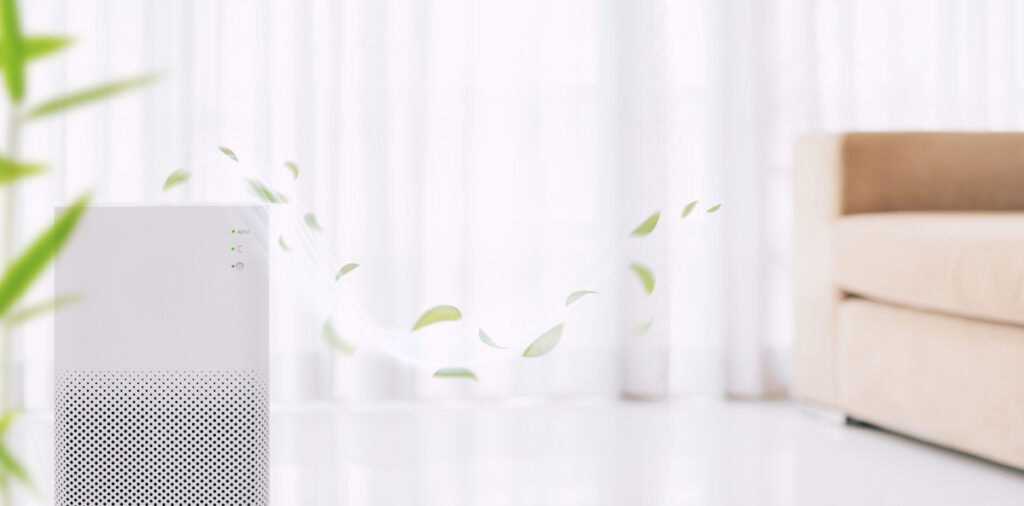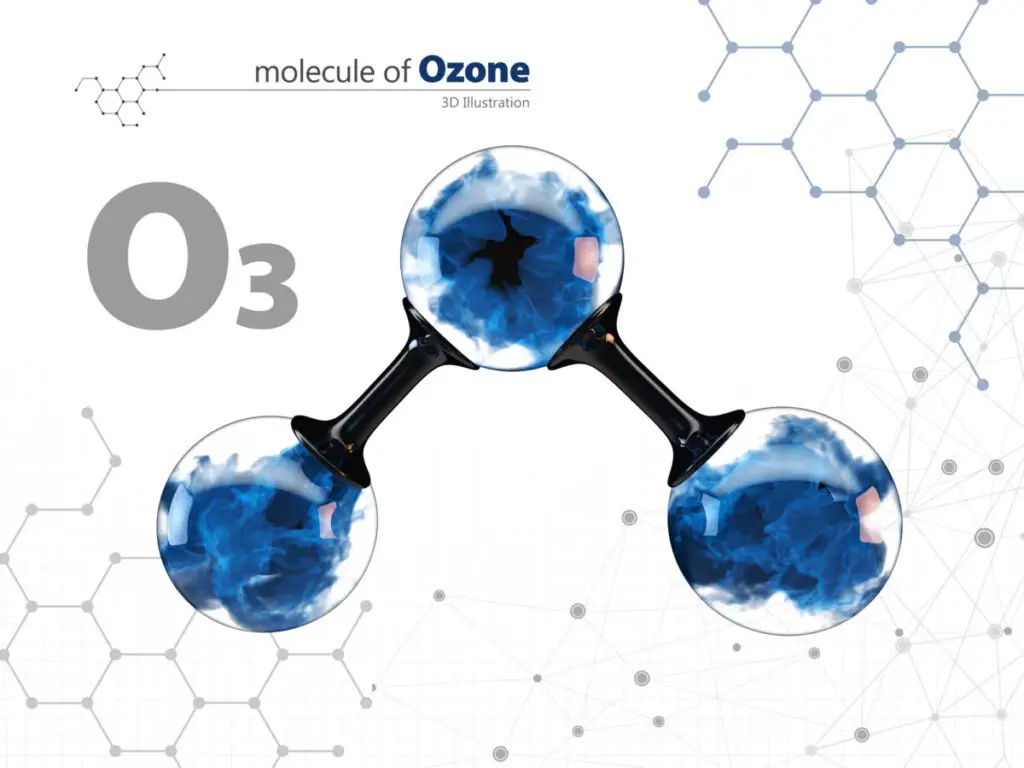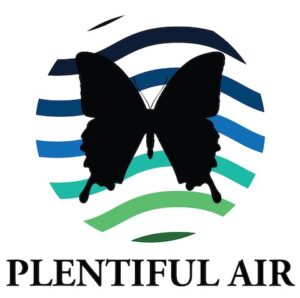Air purifiers remove airborne contaminants that can harm plants and stunt their growth. However, toxic by-products of some air purifiers (ozone) can negatively affect plants. Purifiers with a pre-, activated carbon and True HEPA filters can reduce harmful contaminants (e.g., dust, smoke) and improve the air quality index (AQI) of a home.
Air purifiers are one of the most effective devices at helping reduce the rising impacts of indoor air pollution. While the benefits of air purifiers are common knowledge, how they affect plants is less well known.
If you keep indoor plants, you should be concerned if any by-products of air purification can potentially harm them. Read this article to learn the effect that air purifiers have on plants (the good and the bad).
- Dust, toxic gases, smoke and pathogens can negatively affect plants by preventing photosynthesis, weakening metabolism, and stunting their growth.
- Air purifiers with a pre-filter, activated carbon filter and True HEPA filter can remove gaseous and particulate contaminants that would otherwise harm plants.
- Ozone-producing air purifiers, such as ozone generators and some ionizers, can lead to burnt plant tissue and permanent damage in the plant.
How Airborne Pollutants Affect Plants
There are numerous airborne contaminants, but there are four main types that affect plants:
1. Dust
Dust is one of the major pollutants found in our air. When it settles, or deposits, on leaves it significantly damages the plant by decreasing or restricting photosynthesis (which is essential for plant nutrition). In essence, dust on the leaves of plants can suffocate it.
Dust can also negatively impact other crucial processes like respiration and water transpiration in plants.
It can also act as a pathway for other toxic gaseous pollutants to penetrate the plant.
2. Gases
Various gases are found in the air. Some are naturally occurring, while others are often released into the air via certain processes (e.g., gas leaks, construction, etc). Ozone, sulfur dioxide, nitrogen dioxide, formaldehyde, are some of the common gases that can damage plants.
These gases weaken plant metabolism, prevent photosynthesis, cause oxidative damage, and eventually stunt plant growth.
3. Smoke
Fire smoke, cigarette smoke, and fumes from domestic appliances and machines can accumulate in our homes. They are made of tiny particles that can clog plant (stomatal) pores, preventing sunlight from entering the plant, and reduces the plants’ ability to make sugar from sunlight (photosynthesis).
The tobacco in cigarette smoke also depletes the soil of elements and minerals that are crucial for plant nutrition.
4. Pathogens
Bacteria, molds, fungi, viruses, and numerous other pathogens are found in high concentrations in the air. They can potentially lead to plants’ wilting, leaf spots, and soft roots.
Some bacteria like pseudomonas cause a variety of plant diseases and can result in plant death.
Are Air Purifiers Good For Indoor Plants?

Air purifiers draw air inside the system and circulate it through a filtration system for sanitization. This process removes many contaminants that negatively affect plant growth and health.
Each air purifier has a different set (or type) of filters, and the contaminants removed by any unit depends on its particular set of air filters.
Here are all the major types of filters commonly found in air purifiers and the type of contaminants they can remove:
Generic Filters as Pre-Filter
Almost all modern air purifiers have a generic air filter as a pre-filter that removes large particles, dust, and debris from the air. It primarily protects the system by preventing large airborne particles from clogging the unit, but can also remove some of the larger particles of dust that could otherwise settle onto a plants leaves.
True HEPA Filters
HEPA filters are one of the most effective filters and remove a large variety of pollutants. This is because they have microscopic pores (or spaces) that can trap airborne contaminants as small as 0.3 microns.
HEPA filters can remove more than 99.97% dust, debris, bacteria, mold spores, pollen, pet hair, dander, and other small particles that can negatively impact plants.
Activated Carbon Filters
Activated carbon filters are made of activated charcoal. It is prepared by heating pure charcoal with oxygen. This gives the material a highly porous state, which means it has lots of spaces for adsorbing large numbers of gases.
Toxic gases like benzene, ammonia, xylene, chlorinated compounds, VOCs, and different types of smoke concentrated in the surrounding air bind to the filter surface and are trapped in its pores.
UV Light Bulb
UV light bulbs emit Ultra Violet C rays (100-280 nm wavelengths). This particular UV light is highly effective against pathogens, especially bacteria and fungi.
UV bulbs are usually a component of an air purification system, rather than a stand-alone device, and work to inactivate pathogens like bacteria, molds, viruses, etc.
Ozone Generators
Ozone is a gas that made of three highly reactive oxygen molecules. Some air purifiers (ozone generators and some ionizers) produce ozone that reacts with surrounding substances (particularly airborne contaminants) and changes their chemical makeup, basically eliminating the original toxic molecule or nullifying its harmful effects.
Ozone is mainly used to eliminate gases and foul smells and does not work against dust, debris, pollens, or biological pollutants like bacteria and molds that can harm plants.
Ionizers
Ionizers are devices that emit negative ions. The process electrostatically charges air particles, which eventually fall on and stick to the inner surface of the unit. They are highly effective against dust, allergens, and other particulate matter. Some ionizers also have an effect on pathogens.
How Some Air Purifiers Harm Plants
Air purifiers are typically very beneficial for plants and eliminate substances that can potentially restrict plant growth. However, some air purifiers use harmful mechanisms or produce certain toxic by-products that can damage plants.

Ozone is one such substance that drastically affects animal and plant health.
Even small concentrations of the gas can burn plant tissue, causing permanent damage to its growth.
Even though the use of ozone generators is now reduced, some air purifiers produce minute concentrations of the gas.
Ionizers can also produce ozone. Therefore, when buying an air purifier, check if it emits ozone – it is always mentioned in the product description.
Best Air Purifiers For a Healthy Plant Life
The best air purifier for plants is one that has a pre-filter, activated carbon filter and True HEPA filter. The combination of these three filters means both large and small particle contaminants and gases are removed from the air. This includes dust, smoke, pathogens and toxic gases that would otherwise damage your plants.
Air purifiers that also have a UV-light are perfect for reducing pathogens that can cause plant diseases.
Ozone generators, and air purifiers with ionizer components, should be avoided (when it comes to considering your plants).
Plentiful Air also has detailed information on how a humidifier affects plants available here.
Do I Need An Air Purifier If I Have Plants?
Multiple airborne pollutants, such as dust, cement, smoke, gases, bacteria, mold, can damage plants. Air purifiers eliminate these contaminants from the air and should ideally used to maintain plant health.
How Do Plants Help With Air Purification?
Plants have a natural air purification phenomenon called photosynthesis. Through the process, plants take in carbon dioxide and release oxygen into the air, making it breathable. They can also remove some toxins from the surrounding air.
